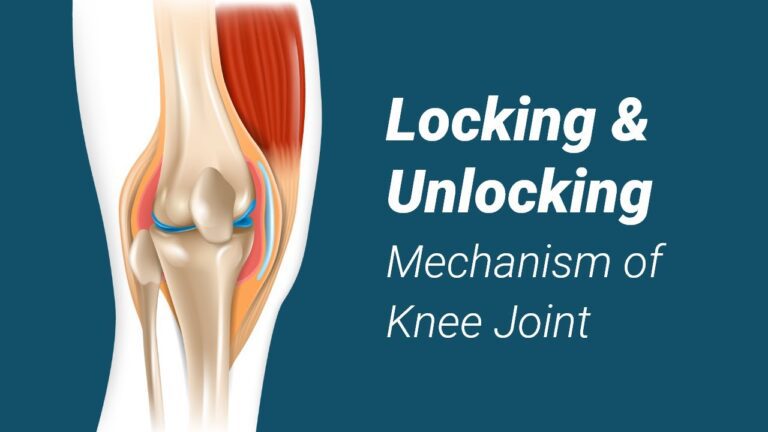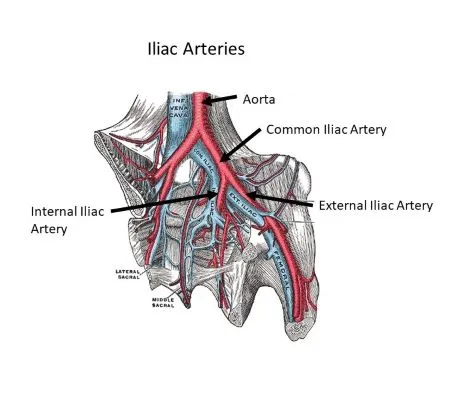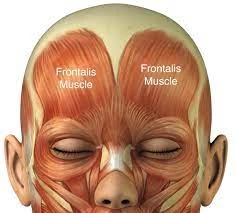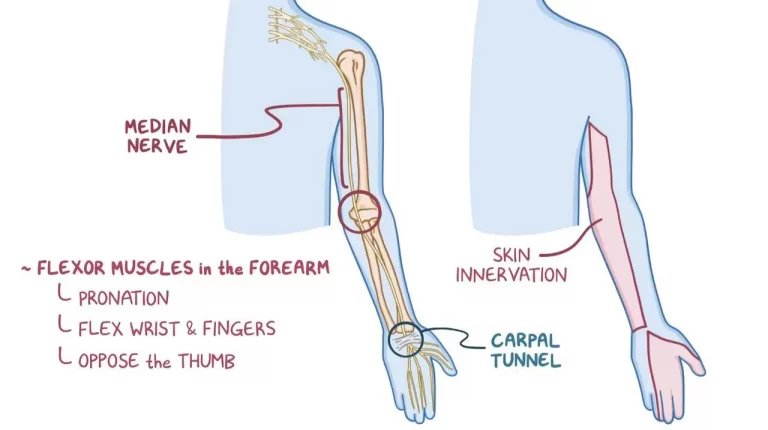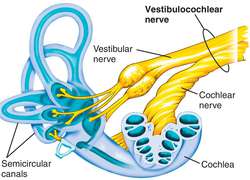Psoas minor muscle
Table of Contents
Introduction
- The psoas minor muscle is a thin, paired muscle of the posterior abdominopelvic part. It is located on the anterior portion of the psoas major muscle but does not extend with it beyond the inguinal ligament. Despite its close relation to the psoas major muscle, the psoas minor is not considered a part of the iliopsoas muscle complex.
- The psoas minor is an inconsistent muscle, found only in some parts of the population. When present, it works on the lumbar spine to make a weak flexion of the trunk.
Origin & insertion
- The psoas minor muscle arising from the lateral part of the bodies of the T12 & L1 vertebrae, as well as the intervertebral disc found between them.
- The muscle then extends inferiorly & tapers into a long, flat tendon, which is also longer than the muscle belly.
- The tendon inserts onto the pecten pubis pectineal line of pubis & the iliopubic eminence via a thickened band of fascia known as the iliopectineal arch.
Structure
- The psoas minor muscle originates from the vertical fascicles inserted on the last thoracic & 1st lumbar vertebrae. From there, it down onto the medial border of the psoas major muscle, & is attached to the innominate line & the iliopectineal eminence. Additionally, it attaches to & stretches the deep surface of the iliac fascia & occasionally its lowermost fibers reach the inguinal ligament. It is posterolateral to the iliopsoas muscle. Variations occur, however, & the insertion on the iliopubic eminence many times radiates into the iliopectineal arch.
- The psoas minor muscle sustains oxygenated blood from the 4 lumbar arteries inferior to the subcostal artery & the lumbar branch of the iliolumbar artery.
Function
- The psoas minor muscle is a very weak muscle & its absence does not result in any reduced functionality of the body, thus its exact action is not entirely clear. However, it is suggested that it assists in trunk flexion, allowing a person to bend forward at the lumbar spine.
Relations
- The psoas minor muscle is located entirely on the anterior surface of the psoas major muscle & thus shares a lot of its anterior relations. The right psoas minor sits posterior to the inferior vena cava & is crossed by the most distal end of the ileum, while the left psoas minor muscle is crossed by the colon.
- Along its anteromedial border, the muscle is connected to the sympathetic trunk & the aortic lymph nodes.
Nerve supply
- The psoas minor muscle is given by direct branches of the lumbar spinal nerves.
Variation
- The psoas minor muscle is considered inconstant & is also absent, only being present in 40% of human specimens studied. It has an average length of about 24 cm, of which about 7.1 cm is muscle tissue & about 17 cm is a tendon.
Blood supply
- The blood supply of the psoas minor muscle comes mainly from the lumbar arteries. However, it also sustains many minor contributions from the blood supply network of the psoas major muscle. This may add branches of the iliolumbar, obturator, external iliac & femoral arteries.
Psoas minor muscle stretching exercise
There are different types of ilicus muscle stretch:
- Standing psoas minor muscle Stretch
- Kneeling psoas minor muscle Stretch
- psoas minor muscle bed Stretch
- Table Psoas Stretch
- Runner’s Lunge
- Hips Elevated stretch
- Supported Side-Plank Reach
- Seated butterfly stretch
- Knee to chest stretch
- Pigeon Pose
- Standing Stance Pelvic Tilt
- Cobra Stretch
- Wall psoas Stretch
- Sumo Squat Stretch.

Standing Psoas minor muscle Stretch
- Standing Psoas minor Stretch is favorable for the person who cannot take the kneeling position.
- How to stretch: Stand tall with the feet Surround hip distance apart.
- Step the left foot forward into the split stance.
- Capture the core muscle as well as tuck the pelvis. The patient may place the hands on the left leg.
- Keep the back leg straight as well as slowly lunge forward with the left leg.
- The patient may feel a stretch in the front of the hip, groin, & thigh on the right side.
- Hold the lunge position for 20-30 seconds. The person might not feel any low back pain. If you do, release the stretch.
- Slowly return to the Initiate position & change sides.
- Perform the standing hip flexor muscle stretch 2-3 times on each side
Kneeling Psoas minor muscle Stretch
- How to stretch: Take a half-kneeling position with the left leg about 2 feet in front of the right leg.
- A left knee might form a 90-degree angle. The patient requires to use of the mat for cushioning.
- Place the hands on the left knee, & keep an upright posture.
- Behind that, incline slightly forward till you feel the stretch in the front of the hip, groin, & thigh of the right side.
- Hold the kneeling position for 20 to 30 seconds. The person might not feel any low back pain. If the patient does, release the stretch.
- Slowly come back to the starting position & change sides.
- Do the kneeling hip flexor stretch 2-3 times on each side.
Glute Bridge
- A bridge assists you to stretch the iliopsoas during also strengthening the glute muscles.
- How to stretch: Place the exercise mat on the ground.
- Lie in the supine position with the arms at the sides, your both knees bent as well as your feet flat on the floor.
- Engage the glutes & raise the hips to create the bridge between the knees and shoulders as well.
- Lift the hips until you feel the stretch in the iliopsoas muscle in both legs.
- If you experience lower back pain, down the hips slightly, but maintain the glutes tight.
- The patient cannot always feel the stretch so do not keep forcing through back pain.
- Hold the bridge position for 20 – 30 seconds.
- Lower the hips to the floor & repeat.
- Do the glute bridge 10 times.
- This also assists you in walking & doing the daily tasks.
- This increases blood supply to the front of the thighs.
- Stretching gives relaxation to the muscles.
- Also, increases the range of motion around the hip joint. Such as hip flexion, and lateral rotation.
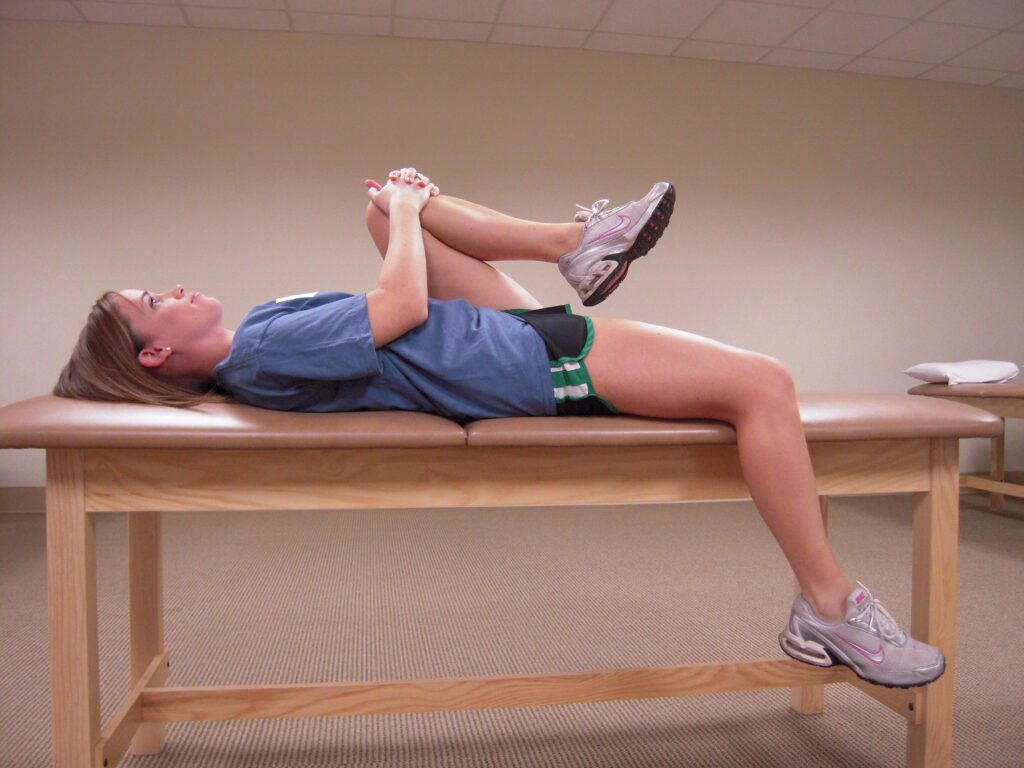
Psoas minor muscle Bed Stretch
- How to do this stretch: Lie in the supine position on the bed & position yourself with the left leg closest to the edge of the
- bed.
- Slowly let the left leg hang down to the side of a bed.
- The right leg may stay bent with the foot on the bed.
- The patient can feel the stretch in the hip flexor.
- Ideally, the foot will hover over the ground instead of touching it. But this is okay if it does touch the ground.
- Deepen the stretch by slowly bending the knee. The person should feel the across the thigh and front of the hip.
- Hold the hanging position for 20 – 30 seconds.
- Come back to the left leg of the bed & rotate so the right side is closest to the edge of the bed.
- Do the hip flexor bed stretch 2-3 times on each side.

Table Psoas Stretch
- How to stretch: Choose a table that is slightly lower than the hip level.
- Stand with the left side next to the table & lift the left leg behind you as well as put it onto a table with a knee facing down.
- The leg will be aligned. The patient may put the folded towel under the knee to relieve any pressure from a table.
- Place the left hand on the table in front of you. The right leg should be slightly flexed.
- Gently move into the stretch by raising the chest up tall as well as opening up the hip flexor area.
- Pause when you feel the stretch in the left hip.
- Hold the standing position for 20- 30 seconds.
- Let go of the stretch & repeat on the opposite side.
- Do the table psoas stretch three times on each side.
Runner’s Lunge
- How to do this stretching: Start kneeling with both knees on the ground.
- Then, bring the left foot forward so that the left knee is directly above the left ankle.
- Simultaneously extend the right leg behind you so that the right knee is behind the right hip as well as the top of the foot
- is on the floor.
- Rest the hands on the left thigh.
- For a deeper stretch, drive the top of the back foot into the ground.
- Pause for 60-120 seconds, then repeat the movement on the opposite side.
- It is one repetition. Do it 3-4 times.
Hips Elevated stretch
- How to do the stretching exercise: Lie down in the supine position with the extended in front of you & the arms at the sides.
- After that, put the foam roller or block under the hips as well as low back.
- So the hips are elevated and the head & shoulders are resting on the ground.
- Bend the right knee & wrap the arms around the shin to bring it closer to the chest.
- Hang there for 60 – 120 seconds.
- Then repeat the movement on the opposite side.
High Lunge
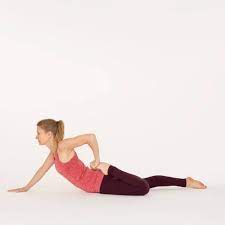
- How to stretch: Stand tall with the feet around shoulder-width apart and the hands at the sides.
- Step the right foot a couple of feet behind you & bend the left knee 90 degrees, so it is directly above the left
- ankle.
- Press the right toes as well as the ball of the foot into the ground and straighten the arms directly overhead.
- Hang up for one to two minutes before repeating on the opposite side.
Half Frog
- How to do this stretch: Begin lying on your stomach with the legs extended behind you.
- Rest the forehead on the back of the hands.
- Bend the left knee so that it is parallel to the left hip, as well as flex the left foot.
- The left shin should be aligned with the right leg.
- Press the left knee into the ground to bring the left inner thigh as close to the mat as possible.
- Hold for 60-120 seconds before repeating on the opposite side.

Hero Pose
- How to do this stretching: Begin kneeling with both knees on the ground.
- Then put a block or even foam roller between the feet, just below the tailbone.
- Flex the knees to lower yourself down on the block or roller.
- Maintaining the knees together & the tops of the feet pressed into the ground.
- Sit tall with the shoulders directly above the hips.

Supported Side-Plank Reach
- How to do this stretching exercise: Begin kneeling with both knees on the ground, then extend the right leg out to the side.
- Simultaneously place the left palm on the ground, directly below the left shoulder, & reach the right arm over the
- right ear.
- Your body should form a direct line from your right ankle to your right hand.
- Press the outer edge of your right foot into the floor and rotate your shoulders so they are side by side with the wall in
- front of you.
- Pause for one to two minutes, then repeat the movement on the opposite side.

Seated butterfly stretch
- How to perform the stretching: Sit on the ground or on an exercise mat.
- Place the soles of the feet together in front of you.
- Let the knees flex out on either side.
- Maintain the back straight as well as the abs engaged.
- Relax the knees as well as allow them to down towards the floor.
- Hold the butterfly pose for 10 – 30 seconds.
- To feel a deeper stretch, lean forward while maintaining the back straight.

Knee to chest stretch
- How to do this stretch: Lie down in the supine position with the legs extended on the floor.
- Gently bend the left knee toward the chest.
- Maintaining the back flat, pull the left knee as close to the chest as possible without discomfort.
- Stretch the right leg out as far as possible & squeeze the glute.
- Holding time is 10-15 seconds.
- Return to the starting position & repeat with the opposite leg.
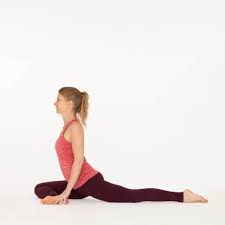
Pigeon Pose
- How to do this stretching: Begin in the plank position.
- Lift the right foot off the floor and slide it forward so your knee is on the ground next to your right hand and your foot
- is near your left hand.
- Exactly where your knee and toes drop will depend on your flexibility.
- Slide your left leg back as far as you can while maintaining your hips square.
- Lower yourself to the ground and onto your elbows, bringing your torso down as far as possible.
- Hold the stretch without letting your chest drop.
- When you feel like you have gotten a good stretch, switch sides.
Standing Stance Pelvic Tilt
- How to do stretch: Stand up tall with good posture, chest pointed up as well as both shoulders back.
- Push the pelvis back & under.
- Hold the standing pose for 10 – 20 seconds.
- Release.
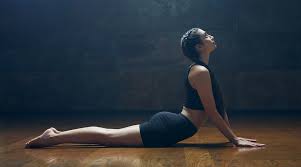
Cobra Stretch
- How to do stretching: Lie down in the prone position.
- Press through the hands to extend the back.
- Engage the glutes to stabilize a pelvis.
- When the patient feels stretched in front of the thigh, pause there for 10-15 seconds as well as release.
- Perform the cobra stretch 3-4 times.
Wall psoas Stretch
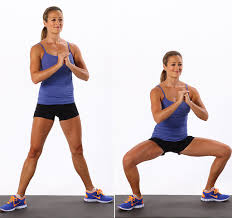
- How to do this stretch: Take the Lunge position in front of a wall.
- Rest your right foot on a wall.
- Drive the knee closer to a wall.
- Rotate the hips backward again.
- To lower the intensity of the stretch, drive the knee forward.
- Hold the psoas stretch for 15-20 seconds & do it 3-4 times.
Sumo Squat Stretch
- How to do this stretch: Stand tall with the feet wider apart.
- Laterally rotate the feet. The knees & toes are pointing out.
- Maintain the back straight as well as the chest facing up.
- Squat downward while maintaining the thighs facing out.
- Pause that squatting position for 10-15 seconds & perform it 2-3 times.
What are the safety precautions the patient should take while Psoas minor muscle stretch?
There is a guideline you have to follow while Psoas minor stretch:
- The patient has to hold the Psoas minor stretch for a certain amount of time, like 20-30 seconds. That way they are typically suggested after workouts, once the muscle group is comfortable. Since an iliopsoas muscle is connected with the hips & trunk, this is critical to do stretches with precise form. Go slow when going into the stretch, as well as never ever go to the point of discomfort.
- To obtain the most out of the stretching routine, experts suggested performing flexibility exercises for all of the major muscles as well as tendon groups a minimum of two to three times a week.
- Do not stretch the muscle where you have prior injuries, namely a sprain, bursitis, fracture, etc.
- Do not bounce while the stretch, this can cause injuries to the muscle.
- Never skip stretching, this may cause a reduction in the range of muscle. The patient may increase it by doing the daily stretch.
What are the Health Benefits of stretching the Psoas minor muscle?
There are so many benefits the patient may achieve by performing Psoas minor stretch. some are below:
- Tight Psoas minor muscles are the main problem for many people, especially if the patients spend most of the day seated. That is due to when we take a sitting position, an iliopsoas muscle shortens & becomes inactive. Iliopsoas stretch may lose the tight muscles.
- Daily stretching of the iliopsoas muscle can decrease the risk of injuries, stabilize the trunk, as well as increase posture.
- This can support your move from a sitting position to standing.
- Stretching an iliopsoas muscle can also reduce hip pain as well as improve hip mobility, And if you have pain in the lower back, performing the proper iliopsoas stretches may help decrease the pain & stop further injury.
- Reduce the risk of Iliopsoas muscle pain or Iliopsoas muscle strain
Strengthening exercise of the Psoas minor muscle
This all-strengthening exercise helps you with muscle weakness & pain.
- Glute Bridge
- Hips Elevated
- High Lunge
- Half Frog
- Hero Pose
- Supported Side-Plank Reach
- Lying hip rotation
- Sidekick
- Hip raises
- Leg raises
- Frankensteins
- Hanging Leg Raise
- Bridging Psoas March
- Romanian Chair Leg Raises with Dumbbell
- boat pose
- lunge
Glute Bridge:
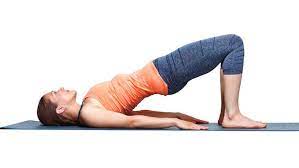
- You are lying on your back with your arms at your sides knees bent & feet flat on the floor.
- Then Engage your glutes muscle & lift your hip joint to create a bridge between your shoulders & knees.
- Raise your hip joint till your feel a stretch in the iliopsoas muscle in both legs.
- When you feel lower back pain then lower your hip joint slightly, but must keep your glutes muscle tight.
- Hold this stretching position for 20 to 30 seconds.
- Then Slowly return to the starting position.
- Perform this exercise 10 times in 1 session & perform 3 sessions per day.
Hips Elevated:
- You are lying on your back with your legs straight out in front of you & your arms at your sides.
- Then, place a foam roller & block under your hip joint & low back so that your hip joint is elevated
- Must keep your shoulder joint & head resting on the ground.
- Then Bend your left knee & wrap your arms around your shin to bring it closer to your chest.
- Hold for this exercise 10 seconds.
- Then Slowly return to the starting position & repeat on the opposite side.
- Perform this exercise 10 times in 1 session & perform 3 sessions per day.
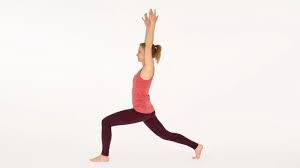
High Lunge:
- You are standing with your feet shoulder-width apart & your hands at your sides.
- Step your left foot a couple of feet behind you & bend your right knee joint at 90 degrees, so it is directly above your right ankle joint.
- Press your left toe & the ball of your foot into the ground.
- Then extend your arms directly overhead.
- Hold for this exercise 10 seconds.
- Then Slowly return to the starting position & repeat on the opposite side.
- Perform this exercise 10 times in 1 session & perform 3 sessions per day.

Half Frog:
- Start this exercise by lying on your stomach with your legs stretched out behind you.
- Rest your forehead on the back of your hands.
- Bend your right knee joint so that it stays parallel to your right hip joint & flex your right foot.
- Must be placed on Your right shin parallel to your left leg.
- Then Press your right knee joint into the ground to bring your right inner thigh as close to the mat as possible.
- Hold for this exercise 10 seconds.
- Then Slowly return to the starting position & repeat on the opposite side.
- Perform this pose 5 times in 1 session & perform 3 sessions per day.
Hero Pose:
- This exercise is Start with a kneeling position with both knee joints on the ground.
- Place a block & foam roller between your feet, just under your tailbone.
- Bend your knee joint to lower yourself down on the block & roller.
- Must be Keep your knees joint together & the tops of your feet pressed into the ground.
- You are sitting tall with your shoulder joint directly above your hip joint.
- For a deeper stretch in this pose, walk your hands behind you with fingers facing your toes & lean back slightly.
- Then Hold this pose for one to two minutes.
- Perform this pose 5 times in 1 session & perform 3 sessions per day.

Supported Side-Plank Reach:
- This exercise is to Start with a kneeling position & both knees on the ground, then extend your left leg out to the side.
- Place your right palm on the ground, directly below your right shoulder joint.
- Try to reach your left arm over your left ear.
- Keep Your body in a form a straight line from your left ankle joint to your left hand.
- Then Press the outer edge of your left foot into the ground & rotate your shoulder joint so that they are parallel to the wall in front of you.
- Hold this exercise position for 10 seconds & repeat the movement on the opposite side.
- Perform this exercise 10 times in 1 session & perform 3 sessions per day.
Lying trunk rotation:
- You are lying on the floor with your feet flat & knee joints bent.
- Then Lay one ankle joint across the other knee joint.
- Rotate the hip joint in & out.
- Hold this exercise position for 10 seconds
- Perform this exercise 10 times in 1 session & perform 3 sessions per day.
Sidekick:
- You are in a Standing position & raise one leg out to the side.
- Do this exercise on both sides & repeat between 10 times per side.
- When the strength increases, try adding light weights to the ankle joint.
- You are also Holding onto a wall for balance if you need it.
- Hold this exercise position for 10 seconds
- Perform this exercise 10 times in 1 session & perform 3 sessions per day.
Hip raises:
- You are lying on the ground with both feet planted on the floor near the buttocks.
- Then try to Raise your leg straight up must keep your thigh parallel.
- Raise the hip joint off the ground.
- Hold this exercise position for 10 seconds
- Perform this exercise 10 times in 1 session & perform 3 sessions per day.
Leg raises:
- Place your both hands & knee joints on the floor.
- Then Raise one foot back towards the sky & return to all fours.
- Hold this exercise position for 10 seconds
- Perform this exercise 10 times in 1 session & perform 3 sessions per day.
Frankenstein
- You are Standing up straight with your arms by your side & step forward with your left foot.
- Try to Swing your leg in the air as high as possible without arching your back.
- Then reach forward with your left hand to touch your right foot.
- Hold this exercise position for 10 seconds
- Perform this exercise 10 times in 1 session & perform 3 sessions per day.
Romanian Chair Leg Raises with Dumbbell
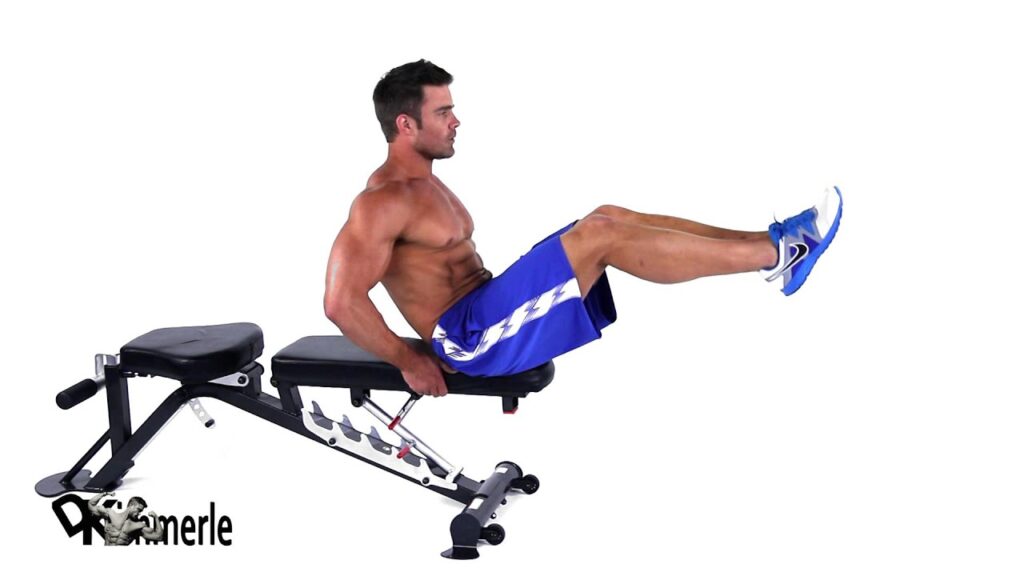
- 1st, take to Position yourself in the Roman chair with a light dumbbell securely between the feet.
- Must be Keep the torso upright & press the lower back against the backrest while the forearms rest on the pad.
- Try to Lift the legs to parallel to the floor by flexing at the hip joint while keeping the knee joint straight.
- Then gently reverse to the initiate position & repeat.
- Hold this exercise position for 10 seconds
- Do this exercise 10 times in 1 session & perform 3 sessions per day.
Bridging Psoas March
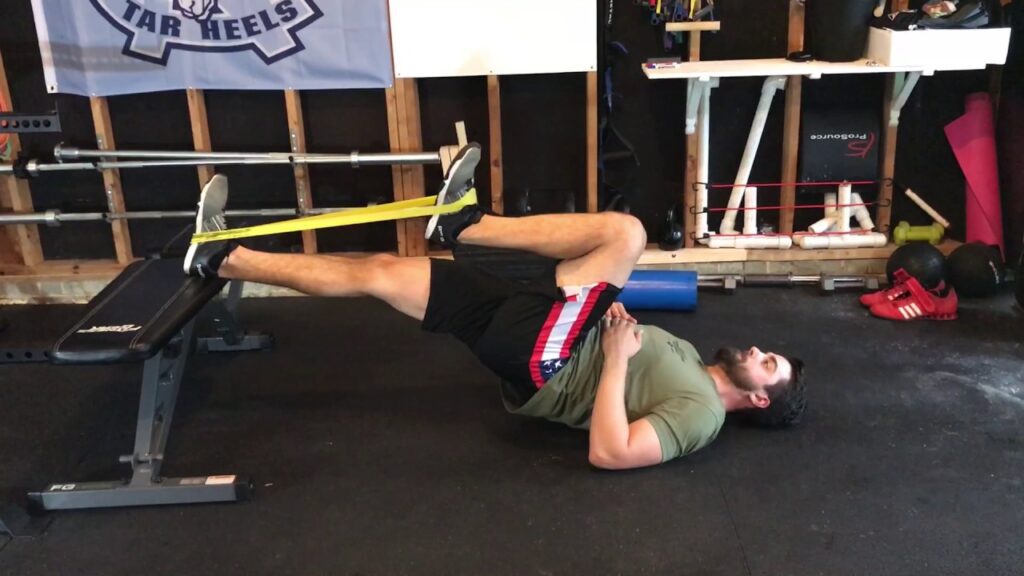
- 1st Loop a mini band around the balls of the feet.
- Then place the heels on an elevated surface with the toes pointed up with the body straight.
- Try to Lift the hip joint, & engage your core & glute muscles.
- Try to bring 1 knee towards the chest but must keep the other leg straight.
- Must be Avoid the hip joint sagging the butt.
- Then Return to the working leg gently & repeat on the other side.
- Hold this position for 10 seconds
- Do this exercise 10 times in 1 session & perform 3 sessions per day.

Hanging Leg Raise
- 1st Hang from a pull-up bar that is high enough so that their feet do not touch the floor when the legs are extended.
- With a firm overhand grip try to flex the hip joint & knee joint simultaneously as you draw your legs out & up towards the chest without using the momentum.
- Then gently return to the starting position &repeat.
- Pause this exercise position for 10 seconds
- Do this exercise 10 times in 1 session & perform 3 sessions per day.
Boat Pose:
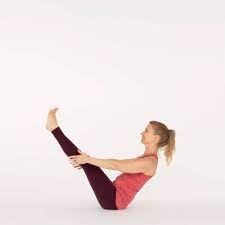
- In Boat Pose sit on a mat with the torso upright, knee joint bent & feet flat on the floor.
- Lean back slowly & tucking the tailbone under so that you are not putting pressure on it.
- While you leaning back try to extend the legs into the air & get the spine in a neutral position by eliminating the arching in the spine.
- Lift the chest &must keep the shoulders down & hold for a time.
- Hold this exercise for 1 to 2 minutes.
- Do this exercise 5 times in 1 session & perform 3 sessions per day.
Lunge:
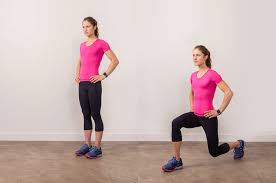
- The lunge exercise is initiated in a standing position, looking straight ahead & take a generous step forward with the right foot.
- Must maintain your trunk upright throughout the motion.
- Then Bend the extended knee joint & transfer the weight onto the right leg.
- Try to lower yourself gently into the lunge till your left knee joint is on the ground.
- The right knee joint might be directly above the right ankle joint.
- Then Step back into a standing position & Repeat with the left leg in front.
- Hold this exercise for 10 seconds
- Perform this exercise 10 times in 1 session & do 3 sessions per day.
FAQ
The psoas minor muscle arises as vertical fascicles are inserted in the bodies of the last thoracic & first lumbar vertebrae & are inserted into the iliopectineal eminence. The muscle’s actions provide for flexion of the lumbar spine in a limited fashion.
Leg length discrepancy. A tight psoas muscle can cause the pelvis to rotate forward.
Knee & low back pain.
Postural problems.
Difficulty moving the bowels.
Menstrual Cramps.
Chest breathing.
Feeling exhausted.
Avoid sitting for extended periods.
The psoas minor stabilizes with its function of tilting the pelvis posteriorly & the major abducts, laterally rotates, & flexes the hip along with the iliacus muscle. Because of these attachments, a weak iliopsoas muscle might affect the position of the lumbar spine & produce a flat or swaying back.
sports injuries to the hip flexors (including psoas minor) have been described in populations across all levels of competitive sports. Estimates of hip flexor pathology range from 5% of injuries all the way to 28% of injuries among high-risk sport-specific groups.
The psoas minor stabilizes with its function of tilting the pelvis posteriorly & the major abducts, laterally rotates, & flexes the hip along with the iliacus muscle. Because of these attachments, a weak iliopsoas muscle might affect the position of the lumbar spine & produce a flat or swaying back.
Pain in the lumbosacral region (the border between the lower part of the spine & the buttocks that can radiate up to lumbar vertebrae and down to the sacrum) when sitting or particularly when changing positions originating from sitting to standing.
The symptoms of Iliopsoas tendinopathy/bursitis are: A deep aching pain feel in the front of the. A clicking & clunking sensation & sound when flexing the hip. Sharp pain with sitting & standing, mainly after a long time sitting.


